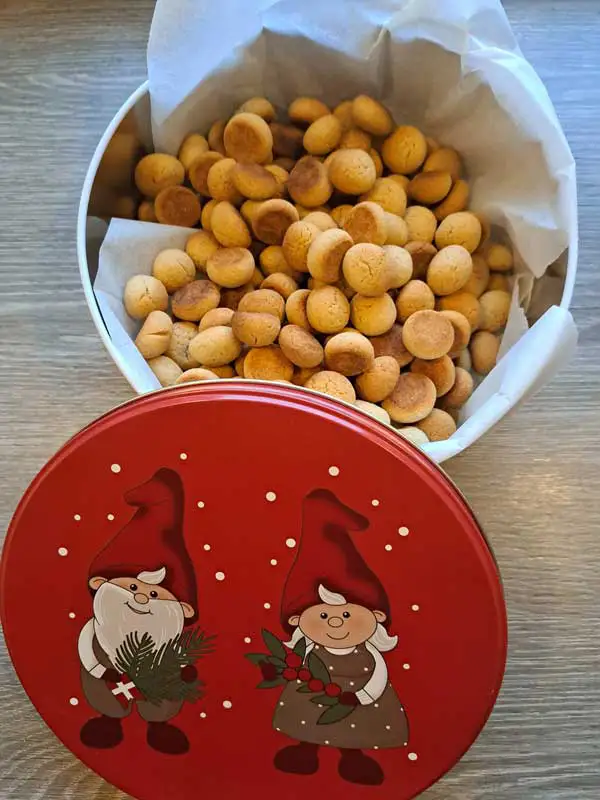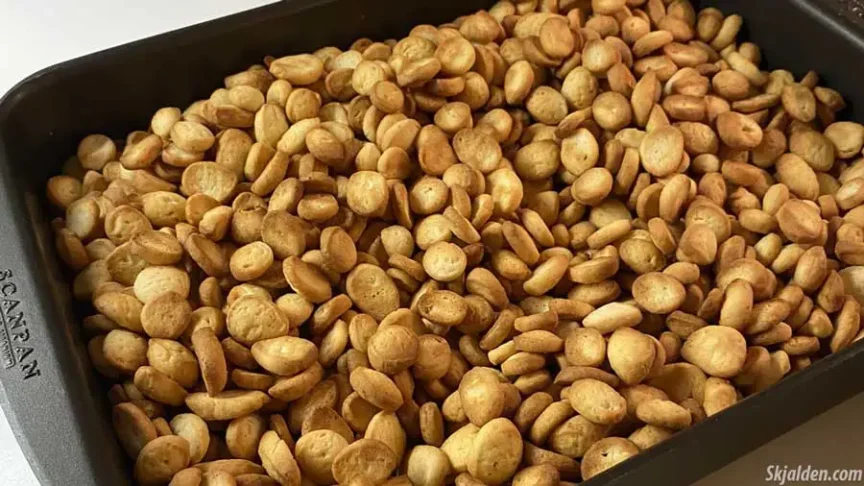Pebernødder are small, spiced cookies that have become a staple in Christmas celebrations in Denmark and other parts of Europe. Their name, which translates to “spicy nuts,” might be a bit misleading since they’re not nuts and aren’t particularly spicy. Instead, these little cookies offer a delightful crunch and a hint of warmth from the blend of spices used, making them perfect for the holiday season.
The history of Pebernødder dates back to 15th century Germany, where they were first made. Unlike today’s cookies, the original versions were made from rye flour and honey, and packed with much stronger spices. Back then, bakers didn’t have things like baking soda or ammonium bicarbonate, so the cookies were quite dense and not crunchy.
The name “Pebernødder” is interesting because it hints at the cookie’s spicy nature rather than its ingredients. The word ‘pepper’ in this historical context didn’t just refer to peppercorns but was a generic term for any spice. Spice traders, or pebersvends, were common during this era. These traders were part of the Hanseatic League, an influential group that controlled trade across much of Europe.
Interestingly, the spice trade impacted social customs as well. Many of these traders remained unmarried due to their travels, which led to the term “Pfeffersack” or “Pepper sack,” a nickname for wealthy, unmarried men. This historical tidbit is still remembered today in parts of Northern Europe where people tease lifelong bachelors by giving them peppercorns on their 30th birthdays.

Pebernødder Today
Traditionally linked exclusively to Christmas, the making of Pebernødder starts as the holiday season approaches. These cookies are now enjoyed for their unique texture and flavor, made possible by modern cooking ingredients that weren’t available in the 15th century. Today’s Pebernødder are made with a mix of flour, sugar, and butter, seasoned with spices like cinnamon, cardamom, and sometimes a bit of pepper to nod to their “spicy” origins.
Besides their role in holiday feasts, Pebernødder are also used in festive games and as decorations. In Denmark, it’s common to see these cookies filling decorative cones on Christmas trees. There’s an old Danish saying from a popular carol, “Højt fra træets grønne top,” which translates to “first show the tree, then eat it.” This reflects the fun tradition of decorating with and then consuming Pebernødder.
Pebernødder aren’t just about taste; they’re a small, edible piece of cultural heritage, a reminder of the spice traders of old, and a festive highlight that brings people together during the holidays.
So, as you enjoy these crunchy, lightly spiced cookies, remember that you’re sharing in a centuries-old tradition that celebrates more than just the flavors of the season. Pebernødder embodies the spirit of a Danish Christmas and the warmth of spending time with loved ones, continuing a legacy that has been passed down through generations.
